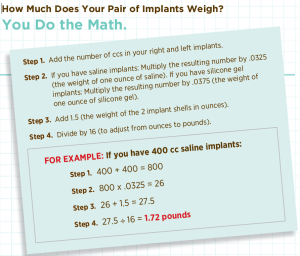How soon after pregnancy can I get a breast augmentation?
When you are pregnant, the developing placenta stimulates the release of hormones, causing your milk glands – and your breasts – to grow and swell. This rapid growth can also cause your skin to stretch. When the milk is gone, your breasts might return to their original size or get smaller, bigger or droopier.
 To know your true post-pregnancy breast size and shape, it’s best to wait at least six months from the time you give birth or from the time you stop breastfeeding, whichever is later. At that point, you’ll be able to choose breast implants that will make you proportional.
To know your true post-pregnancy breast size and shape, it’s best to wait at least six months from the time you give birth or from the time you stop breastfeeding, whichever is later. At that point, you’ll be able to choose breast implants that will make you proportional.
Breastfeeding itself does not cause the breasts to droop. A study in the journal Aesthetic Surgery identified the following risk factors for an increased degree of breast sagging: body mass index (BMI), the number of pregnancies, a larger pre-pregnancy bra size, smoking history and age. Breastfeeding was not found to be a risk factor.
If you are thinking about having a child in the next year or so, I would suggest that you wait because your post-pregnancy breasts might look different from your current pair. But if parenthood is several years down the road and you are anxious to be more proportional, fit better into your clothes or correct breast asymmetry, you don’t have to wait for a breast augmentation. Just understand that you might need a revision after pregnancy.
Did you know? During pregnancy, hormonal changes cause the nipple and areola to get bigger and darker. Scientists speculate that it is evolution’s way of making it easier for an infant to find and latch onto the breast.
IF YOU ARE DIETING . . .
Like pregnancy, weight loss can take a toll on your breasts. When you lose weight, it not only reduces the size of your waist and thighs, but it might also reduce the size of your breasts, which are made up primarily of fatty tissue. If the skin doesn’t retract when some of the fat disappears from your breasts, you could be left with droopy breasts, stretched skin or empty-looking breasts, which might make you a candidate for a breast lift alone or with an augmentation.

If you are dieting, be sure to save a few dollars for shoe shopping. Some women report that along with losing a cup size, they lose a shoe size.
If you are planning to lose 10 percent or more of your body weight, it’s wise to wait until you have reached your goal before you have cosmetic breast surgery so you’ll know your starting size. That way you’ll have the best chance of getting a satisfactory long-term result.




















